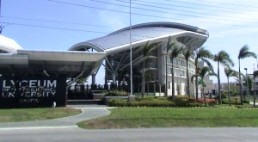Primary Education
Paaralang Elementarya or elementary education is the first part of the educational system, and it includes the first six years of compulsory education from grade 1 to 6, with an optional 7th grade offered by some schools. Major subjects include maths, science, English, Filipino and social sciences. Optional subjects include music, arts, physical education, and health. Private school students may select subjects from a wider curriculum including religious instruction in the dogma of their choice.
Until 2004, primary students traditionally sat for the National Elementary Achievement Test (NEAT) administered by the Department of Education, Culture and Sports (DECS). However, the scores obtained by students in the NEAT were not used as a basis for their admission into Secondary school.
During 2004, when DECS was officially converted into the Department of Education (DepEd), and as a result of reorganization, the NEAT was changed to National Achievement Test (NAT) by the Department of Education (DepEd). Students from both public and private elementary schools take this exam to measure a school's competency. As of 2006, only private schools have entrance examinations for Secondary school.
Middle Education
Middle school education is a part of Primary
(or Elementary) Education
Secondary Education
Secondary education known as
Paaralang
Sekundarya comprises 4 grades that have changed little since the second
world war. The curriculum is prescribed for both private and state
schools. Core subjects are as follows:
- Year 1 - Filipino 1, Algebra 1, Integrated Science, English 1, Phillipine History
- Year 2 - Filipino 2, Algebra 2, Biology, English 2, Asian History
- Year 3 - Filipino 3, Geometry, Chemistry, World History, Geography
- Year 4 - Filipino 4, Calculus, Trigonometry, Physics, Literature, Economics
Minor optional subjects include Health, Music, Arts, Physical Education,
Home Economics and Technology. Selected schools present additional
subjects. Total secondary school numbers exceed 5.5 million.
Vocational Education
Accredited mainly private institutions known as colleges offer technical and vocational education. Programs offered vary in duration from a few weeks to two-year diplomas. On completion students may take centrally-administered examinations to obtain their diploma or certificate.
Vocational colleges don’t usually require an entrance examination, only a record of high school education and an enrollment fee.
Tertiary Education

Most institutions of higher learning are regulated by the commission for higher education.
Colleges typically offer 1 or more specialized programs while universities must offer at least 8 different undergraduate degree programs in a wide array of subjects and at least 2 graduate programs.
Public universities are all non-sectarian and offer a wide-range of programs, with English as a medium of instruction. Public universities are government funded, with the largest, the University of the Philippines, receiving the substantial portion of the annual budget.
There are also a number of private tertiary institutions, sectarian or non-sectarian as well as for-profit or not-for-profit. Most private institutions are Catholic non-profit organizations.
Most universities offer 4 year degree programs with 2 semesters per year.

 Most institutions of higher learning are regulated by the commission for higher education.
Most institutions of higher learning are regulated by the commission for higher education.